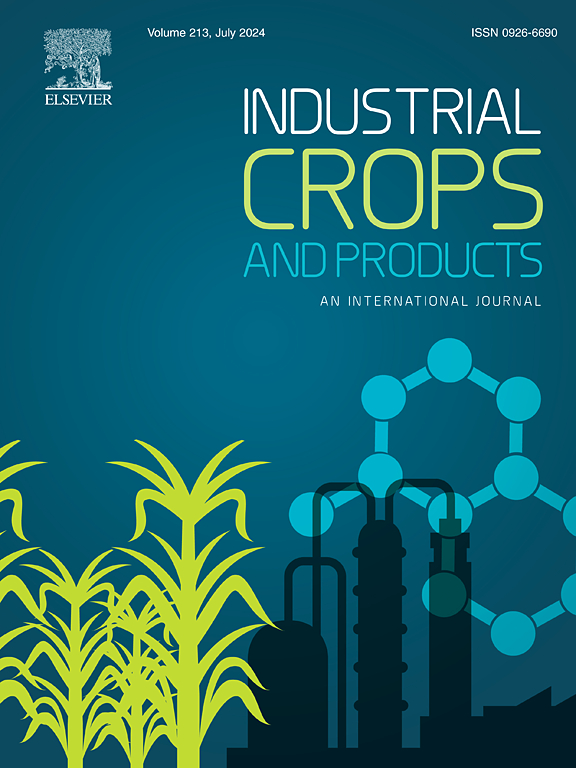Soil extracellular enzymes, soil carbon and nitrogen storage under straw return: A data synthesis
IF 6.2
1区 农林科学
Q1 AGRICULTURAL ENGINEERING
引用次数: 0
Abstract
Straw return is an important agricultural practice with the potential to impact soil carbon (C) and nitrogen (N) cycling. Extracellular enzyme activity (EEA) is crucial for soil organic matter degradation. However, it remains unclear how soil EEA respond to straw return or whether these responses can predict changes in soil C and N cycling induced by straw return. By synthesizing 135 field studies worldwide, we showed that straw return significantly increased the activities of C-acquisition (C-acq), N-acquisition (N-acq), phosphorus-acquisition (P-acq), and oxidative-decomposition (OX) enzymes by 26.5 %, 20.3 %, 17.8 %, and 9.1 %, respectively. Notably, we found a significant positive relationship between the logarithmic response ratios (lnR) of the activities of OX and C-acq and soil C, suggesting that changes in combined EEA might serve as indicators of soil C storage under straw return. Interestingly, the changes in EEA due to straw return were unrelated to increases in soil total N (TN). Moreover, the positive effects of straw return on the activities of C-acq and P-acq negatively correlated with the amount of straw applied. Some abiotic factors, such as soil pH and soil C:N ratio, influenced the straw return-induced changes in soil C and N. These findings highlight the importance of considering key abiotic factors in understanding the microbial mediation of soil C and N cycling under straw return. Overall, by analyzing the changes in EEAs, we can gain in-depth mechanistic understandings of how soil carbon and nitrogen transform and cycle, which is crucial for elucidating soil C and N dynamics.
秸秆还田条件下土壤胞外酶与土壤碳氮储量的数据综合
秸秆还田是一项重要的农业实践,具有影响土壤碳(C)和氮(N)循环的潜力。胞外酶活性(EEA)是土壤有机质降解的关键。然而,土壤EEA如何响应秸秆还田,以及这些响应是否能预测秸秆还田引起的土壤碳氮循环变化,目前尚不清楚。通过综合全球135个田间研究,我们发现秸秆还田显著提高了c -获取(C-acq)、n -获取(N-acq)、磷获取(P-acq)和氧化分解(OX)酶的活性,分别提高了26.5% %、20.3% %、17.8% %和9.1 %。值得注意的是,我们发现OX和C-acq活性的对数响应比(lnR)与土壤C呈显著正相关,表明复合EEA的变化可以作为秸秆还田条件下土壤C储量的指标。有趣的是,秸秆还田导致的EEA变化与土壤全氮(TN)的增加无关。秸秆还田对C-acq和P-acq活性的正向影响与秸秆用量呈负相关。土壤pH和土壤C:N比等非生物因子影响秸秆还田诱导的土壤C和N的变化。这些研究结果表明,考虑关键的非生物因子对于理解秸秆还田下微生物介导土壤C和N循环的重要性。总体而言,通过分析EEAs的变化,我们可以深入了解土壤碳氮转化和循环的机理,这对阐明土壤碳氮动态至关重要。
本文章由计算机程序翻译,如有差异,请以英文原文为准。
求助全文
约1分钟内获得全文
求助全文
来源期刊

Industrial Crops and Products
农林科学-农业工程
CiteScore
9.50
自引率
8.50%
发文量
1518
审稿时长
43 days
期刊介绍:
Industrial Crops and Products is an International Journal publishing academic and industrial research on industrial (defined as non-food/non-feed) crops and products. Papers concern both crop-oriented and bio-based materials from crops-oriented research, and should be of interest to an international audience, hypothesis driven, and where comparisons are made statistics performed.
 求助内容:
求助内容: 应助结果提醒方式:
应助结果提醒方式:


